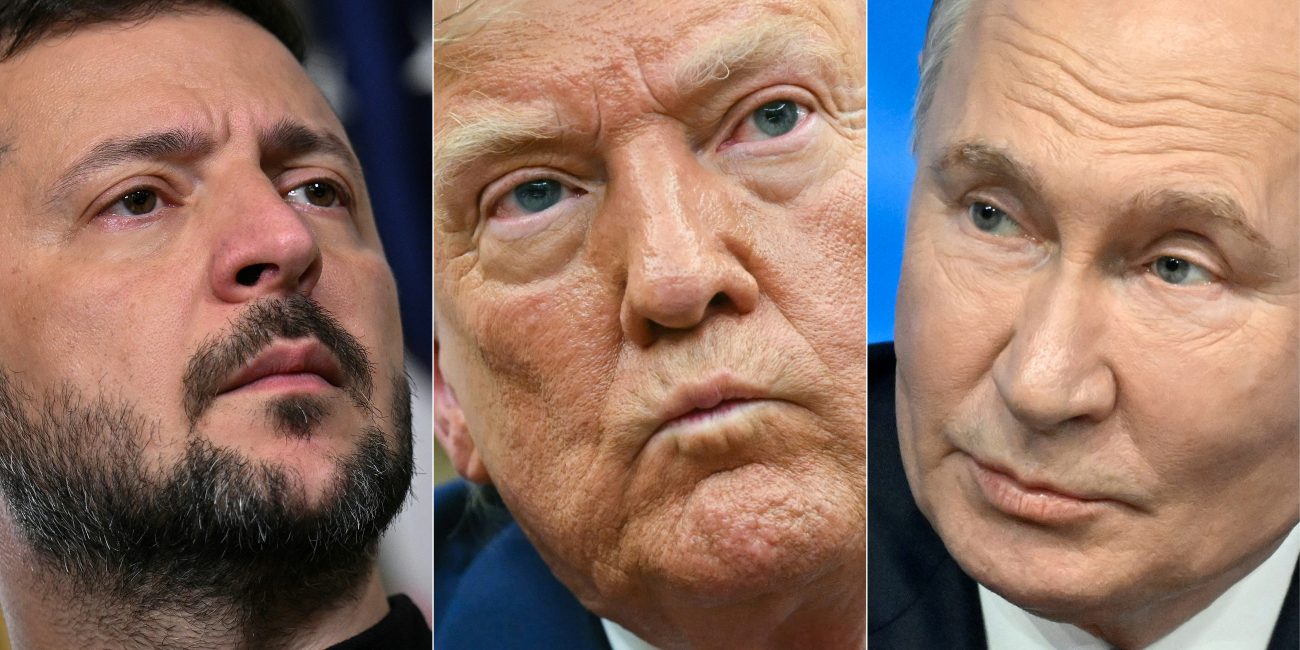One of the possible reasons why Russian President Vladimir Putin is not listening to his “friend” and U.S. counterpart Donald Trump, despite the latter’s threat to impose more financial penalties on Moscow over the war in Ukraine, is that the former believes that he has an upper hand on the battlefield now.
And that is because not only have the Russian technocrats succeeded in building an economy that can weather Western sanctions, but Russia is also able to find many soldiers joining its forces in the middle of a summer offensive when Ukraine’s reserve personnel are dwindling.
Regardless of the technology and weapons, ultimately, a war is won when there are boots on the ground. And here, it is an open secret that Ukraine is suffering from an acute manpower shortage.
No men aged 18 to 60 have been allowed to leave the country since February 2022 without special permission in Ukraine, but there is all-around resistance to join the armed forces under coercion.
On the other hand, recent reports and studies show that despite Russia losing thousands of soldiers, it has been able to manage fresh recruitments relatively easily.
As of May this year, the Russian Armed Forces had 3.57 million troops, with 37 percent of them, or 1.32 million, being active military personnel. Two million were reserve service members, and 250,000 were paramilitary forces.
Importantly, the number of people in the Russian military has doubled after the invasion of Ukraine. Now, the Russian Army is the fourth-largest, along with North Korea (China, India, and the United States being the first, second, and third, respectively).
The point is that as of now, Russia’s active troops outnumber Ukraine’s by 420,000, let alone the reserve and paramilitary forces. And most of them happen to be proper Russians, distinct from foreign soldiers on hire.
According to the latest available data, Russian recruitment continued to be successful in the first quarter of 2025. Recruitment increased by 22% from the first quarter of 2024 (from 73366 to 89601 men).
It may be noted that soon after the war in Ukraine began in 2022, The EurAsian Times had dealt with details of how the battlefield in Ukraine had become incredibly complex, with a range of violent non-state actors—private military contractors, foreign fighters, volunteers, mercenaries, extremists, and terrorist groups—all in the mix.
Ukraine had openly announced then that some twenty thousand (20,000) people from fifty-two (52) countries had applied to fight in the newly formed International Legion of Territorial Defense of Ukraine. They reportedly included Americans, Canadians, and several European nationalities.
Russia, too, had boasted of the fact that some sixteen thousand (16,000) men from the Middle East and Central Asia had applied to fight for Russia.
Understandably, when many of these foreign fighters were killed and some of them were taken as prisoners of war (POWs) by both sides (though some have been released through subsequent swappings of the POWs), the number of those fighting for Ukraine has declined. This is particularly true of Ukraine.
As far as the Russian side is concerned, the Western countries allege that Putin has made mercenaries part of Moscow’s military strategy since it first intervened in Ukraine in 2014 to seize Crimea and to support the pro-Russia separatists in Donbas.
In fact, so the argument goes, Putin helped create the Wagner Group, arguably the biggest private security operator in the world, “to aid, stand in for, and provide plausible deniability to Russian forces” in Russian operations abroad in thirty countries on four continents, from Venezuela to Libya and Afghanistan. That Wagner leadership fell out later with Putin and was mysteriously killed is a different story.
However, going by the Western reports, Russia continues to recruit foreign soldiers for fighting in Ukraine. It is said that Russia’s principal recruiting centre happens to be Central Asia (both in the region and among the large migrant worker population in Russia). Other main sources include Syria, Cuba, India, and Nepal.
Russia’s efforts in Cuba and India have been slammed by critics as human trafficking operations. Nepal has proved particularly vulnerable to Russian recruitment, with estimates ranging from a few thousand to 15,000 men signing up to fight in Ukraine.
Above all, the issue of foreign troops fighting for Russia has drawn global attention the most, with the news that North Korea has sent approximately ten thousand soldiers to join the invasion of Ukraine. Many see this as a watershed moment in the war, due to the number of troops involved and the official nature of the deployment.
Besides, there are reports that Russia is targeting immigrants, especially those who recently acquired Russian citizenship, for recruitment. Politicians and state employees jailed on corruption charges, and prisoners convicted of serious charges, have also been offered the opportunity to enlist as soldiers.
However, it seems to have been under-reported that Russia is increasingly relying on contract soldiers, offering high salaries and signing bonuses to entice recruits from within the country. And the costs are being shared between Moscow and the regional or provincial capitals.

In a significant but unique database that Dr. Janis Kluge of the German Institute for International and Security Affairs (SWP), Berlin, has just compiled, it has been seen that 37 Russian regions’ regional budget spending on enlistment bonuses dramatically increased in 2024.
Kluge’s study shows that a growing number of Russian men volunteered to sign a contract with the Russian army, and financial incentives gained in importance as well as in size. Over the course of 2024, these incentives for contract soldiers increased significantly. New federal and regional privileges were also introduced to make military service more attractive for soldiers and their families.
But most important was a significant increase in “sign-on bonuses”, which are up-front payments for newly enlisted soldiers. At least in some regions, the sign-on bonuses rose to millions of rubles, equivalent to several years’ average income.
Sign-on bonuses consist of at least two parts: one paid for by the regional budget and one paid for by the federal budget. In many cities, there is also a third, smaller bonus from the municipality.
Since November 2022, the federal government has offered a sign-on bonus of 195,000 rubles for mobilized and contract soldiers. Initially, this was most likely intended to calm the anger caused by the forced mobilization.
Over time, the sign-on bonus increased several times and turned into a key recruitment incentive. In July 2024, Putin ordered an increase of the federal bonus from 195,000 to 400,000 rubles, “recommending” that regions should at least match the federal government’s bonus with a payment of their own.
According to Kluge, some regions even far exceed this recommendation. And that is because certain regions like Moscow or St. Petersburg are very rich. But then, certain poor regions are also paying equally high. As they have to meet a quota of recruitments as determined by Moscow, they pay high to entice the recruits.
For instance, new contract soldiers in the poor region of Samara currently receive 3.6 million rubles up-front from the regional budget. Together with the federal bonus, they can now expect a payout of 4 million rubles ($47,000) directly after signing a contract with the military—equivalent to five times the average annual salary in the region.
Meanwhile, other regions (around a third) have stuck to the minimum bonus size of 400,000 rubles demanded by Putin. The differences indicate that some regions are desperately looking for new contract soldiers, while others seem to be content with the number of men signing up. It means that the latter are meeting the recruitment targets set by the Kremlin.
Overall, thus, the system is doing well. Setting a quota and leaving the specifics to regional governments has made recruitment both more cost-efficient and more effective for Putin.
Of course, Kluge cautions that Russia’s model of voluntary recruitment says little about the recruits’ fitness or qualification. Indeed, there are signs that a growing number of men over 50 are signing up.
Secondly, the financial burden on regional budgets is also increasing and could become more of an issue as the Russian economy slows down. “This means that, if Russia continues its war against Ukraine with the same intensity as in 2024, the politically sensitive issue of another round of forced mobilization could resurface”, he foresees.
But then, that is for the future. At the moment, “the most-sanctioned nation on the earth” is doing fine, with its economy outgrowing many G-7 nations – Canada, France, Germany, Italy, Japan, the UK, and the US, as reported by the BBC.
The Russian economy expanded by 4.3% in 2024, compared with 1.1% in the UK and 2.8% in the U.S.
In other words, so long as the Kremlin continues to keep the momentum in its economy, its frontlines in Ukraine will remain adequately manned in Russian uniform.
- Author and veteran journalist Prakash Nanda is Chairman of the Editorial Board of the EurAsian Times and has been commenting on politics, foreign policy, and strategic affairs for nearly three decades. He is a former National Fellow of the Indian Council for Historical Research and a recipient of the Seoul Peace Prize Scholarship.
- VIEWS PERSONAL OF THE AUTHOR
- CONTACT: prakash.nanda (at) hotmail.com



